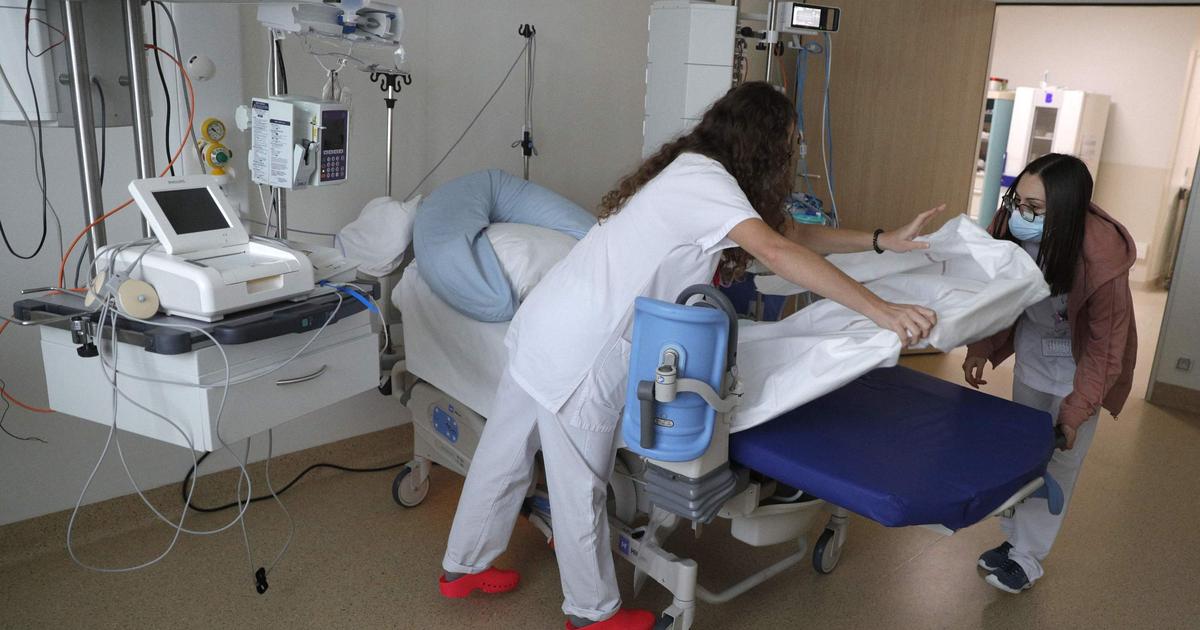“The decline is now underway in Île-de-France” rejoiced Thursday evening Jean Castex.
This “reassuring prospect”, as well as the lesser virulence of the Omicron variant, justifies in the eyes of the Prime Minister to lighten the restrictions.
On February 2 and then February 16, in parallel with the entry into force of the vaccination pass from this Monday, the various measures still in place (compulsory telework, gauges, closed nightclubs, etc.) will disappear everywhere in France.
For the moment, the Ile-de-France region is indeed a French exception.
While the incidence rate continues to climb nationally (nearly 3,400 cases per 100,000 inhabitants over the past week), it has been falling for 10 days in Île-de-France, dropping from more than 4,100 to 3,570. As always , the situation varies according to age groups.
This decline is in fact mainly “driven” by young adults aged 20-29.
The incidence continues to increase slightly in the 30-49 age group, while it decreases slowly in the over 50s.
Also pay attention to one thing: if the number of daily cases fell by 7% in one week, the number of tests carried out fell by 26% over the same period.
This can be explained in particular by a more massive use of self-tests, which are not taken into account in the databases.
Number of cases less relevant?
In short, this "decline" announced by the Prime Minister still seems fragile.
In the Greater London region, cited as an example by Jean Castex since it “peaked 10 days before the rest of the United Kingdom”, the downward trend also seems to be leveling off.
But the number of positive cases is no longer necessarily the most relevant indicator, both because of vaccination – which mainly protects against the risk of a serious form – and the arrival of the Omicron variant.
The latter infects an extremely high number of inhabitants (between 9 and 14 million in one month in the whole of France, according to the scientific council), including vaccinated people.
Read alsoVariant Omicron: critical care, efficacy of vaccines... confirmed by French data
Thus, hospital indicators are perhaps the most crucial to track.
And the situation is also going in the right direction in Île-de-France.
79 patients diagnosed with Covid are admitted to critical care there every day, compared to nearly 100 a week earlier.
"It's decreasing quite dramatically here and it's very pleasing, but we're not getting carried away," says a nurse from the Ile-de-France region.
Lower risk of severe form
More and more positive cases but fewer and fewer very serious forms? Seemingly paradoxical, this finding can be explained in particular by the characteristics of the Omicron variant. This has been the majority since mid-December in Île-de-France, the region affected first. It now represents almost all contamination. However, a person under the age of 80 and infected with Omicron presents between 2 and 8 times less risk of being admitted to critical care than another infected with the Delta variant, depending on his precise age and his vaccination status, d 'according to the latest data from the Department of Research, Studies, Evaluation and Statistics (DREES).
With regard to “conventional” hospital services, the situation is stabilizing in Île-de-France.
600 patients diagnosed with Covid are cared for there every day on average.
Important point: an increasingly large proportion of them are so-called “fortuitous” or “accessory” Covids, that is to say patients who have been infected with SARS-CoV-2 but treated for something else.
Nationally, they accounted for a quarter of hospital admissions last week.












/cloudfront-eu-central-1.images.arcpublishing.com/prisa/S7ERVSCT4FUVX6R7TUVBDNTH5Y.jpg)


